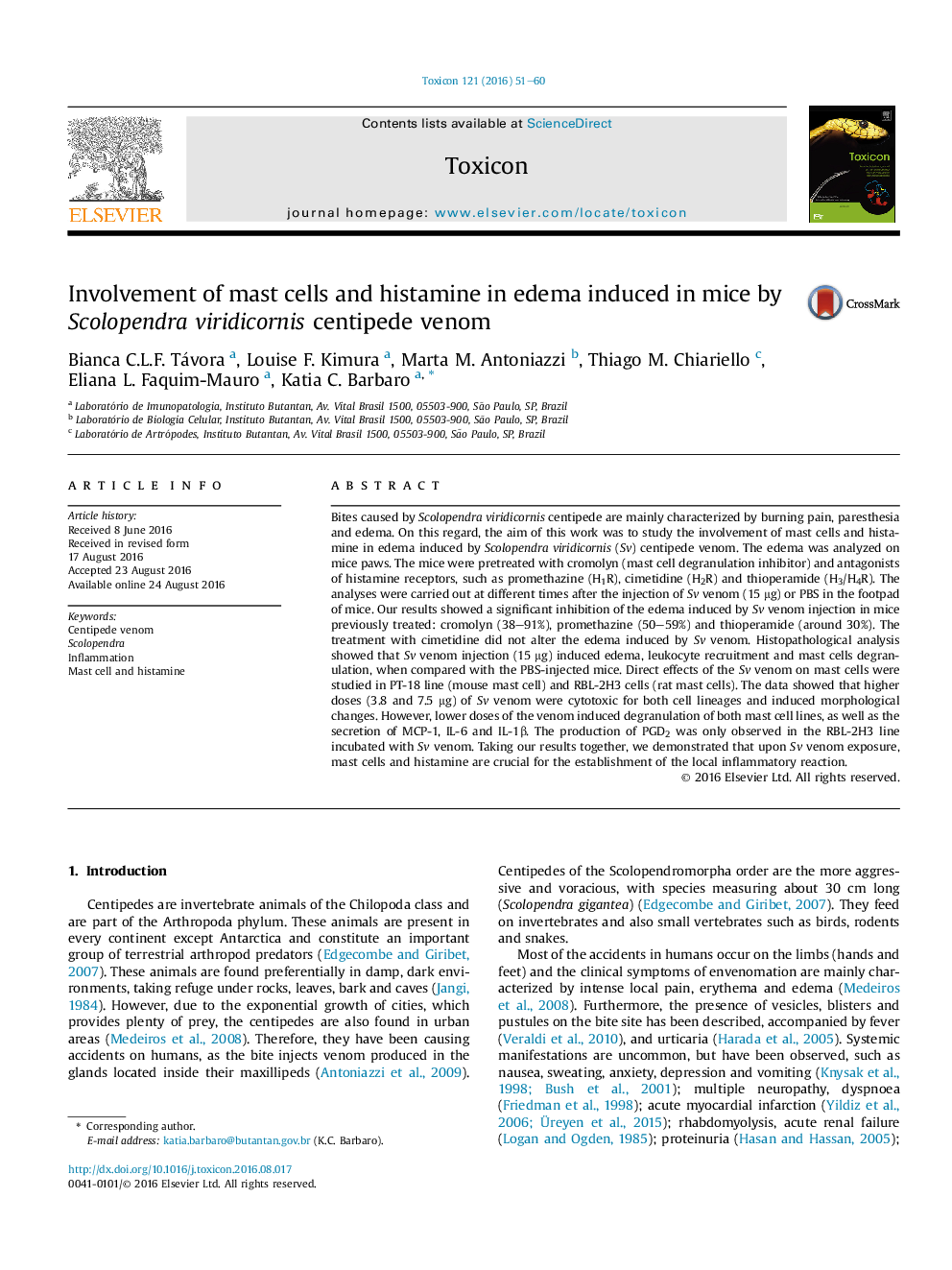| Article ID | Journal | Published Year | Pages | File Type |
|---|---|---|---|---|
| 2063950 | Toxicon | 2016 | 10 Pages |
•Mast cells and histamine are involved in the inflammatory cascade developed by Scolopendra viridicornis venom.•The role of histamine in edema formation induced by Scolopendra viridicornis venom is mainly via the H1 receptor.•Scolopendra viridicornis venom has a direct effect on mast cells lines in vitro.•Scolopendra viridicornis venom promotes cytokines, chemokine and eicosanoid production by mast cell lines in vitro.
Bites caused by Scolopendra viridicornis centipede are mainly characterized by burning pain, paresthesia and edema. On this regard, the aim of this work was to study the involvement of mast cells and histamine in edema induced by Scolopendra viridicornis (Sv) centipede venom. The edema was analyzed on mice paws. The mice were pretreated with cromolyn (mast cell degranulation inhibitor) and antagonists of histamine receptors, such as promethazine (H1R), cimetidine (H2R) and thioperamide (H3/H4R). The analyses were carried out at different times after the injection of Sv venom (15 μg) or PBS in the footpad of mice. Our results showed a significant inhibition of the edema induced by Sv venom injection in mice previously treated: cromolyn (38–91%), promethazine (50–59%) and thioperamide (around 30%). The treatment with cimetidine did not alter the edema induced by Sv venom. Histopathological analysis showed that Sv venom injection (15 μg) induced edema, leukocyte recruitment and mast cells degranulation, when compared with the PBS-injected mice. Direct effects of the Sv venom on mast cells were studied in PT-18 line (mouse mast cell) and RBL-2H3 cells (rat mast cells). The data showed that higher doses (3.8 and 7.5 μg) of Sv venom were cytotoxic for both cell lineages and induced morphological changes. However, lower doses of the venom induced degranulation of both mast cell lines, as well as the secretion of MCP-1, IL-6 and IL-1β. The production of PGD2 was only observed in the RBL-2H3 line incubated with Sv venom. Taking our results together, we demonstrated that upon Sv venom exposure, mast cells and histamine are crucial for the establishment of the local inflammatory reaction.
